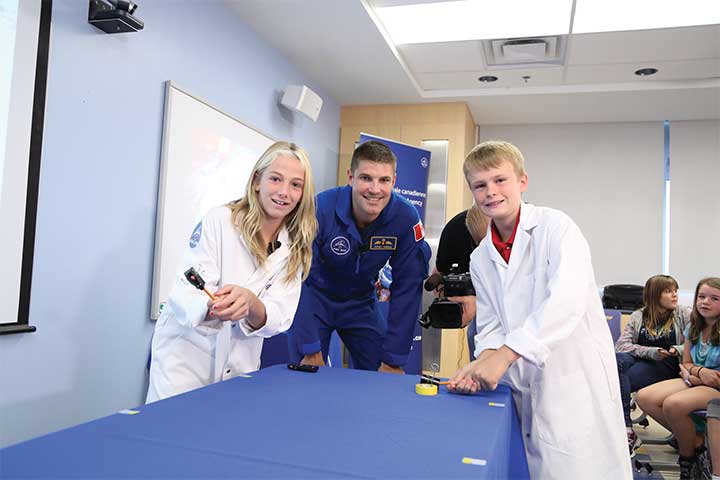Canada's Space Policy Framework
FIVE CORE PRINCIPLES
3. Progress Through Partnerships
Space is a shared domain and an expensive undertaking. The Government will look to continue partnerships to share the expenses and rewards of major space initiatives. This will include collaboration with international partners to pool data for mutual benefit and obtain services and technologies that would otherwise be unavailable. At the same time, effective export control and regulatory measures will continue to protect Canadian technologies and data from theft or from falling into the hands of hostile interests.
4. Excellence in Key Capabilities
Canada has had enormous success in a number of areas of space technology, from telecommunications to remote sensing to robotics – expertise that has been invaluable domestically and to our international partners. The Government will continue to support and advance proven Canadian competencies while keeping a close watch on new niches of technological accomplishment.
5. Inspiring Canadians
An advanced, prosperous nation requires an educated, skilled workforce. Space is a highly visible means of motivating young Canadians to pursue careers in science, technology, engineering and math. Working with industry, universities and colleges, the Government will communicate the importance of space in the effort to recruit, support and retain highly qualified personnel.
INSPIRING THE NEXT GENERATION
THE MAPLE LEAF ON MARS
NASA's Curiosity rover on Mars is equipped with the Canadian-built Alpha Particle X-Ray Spectrometer (APXS), which probes the chemistry of rocks and soils to help determine if the Red Planet ever was, or could still be today, able to support microbial life.
The Canadian Space Agency managed the development of APXS with MDA as the prime contractor and the University of Guelph providing scientific direction.
Animation of Curiosity landing in August 2011. Credit: NASA / JPL-Caltech
DEXTRE
Dextre, the International Space Station's Canadian robotic "handyman," is the only dexterous robot conducting both station maintenance and cutting-edge technology demonstrations. It has made space history by successfully refuelling a mock satellite on the exterior of the station, demonstrating how robots could service and refuel satellites in space to extend their lifetimes and reduce orbital debris.
Video of Dextre working on the International Space Station. Credit: NASA
Chris Hadfield captured the hearts of Canadians and the attention of the world during his five-month mission aboard the International Space Station. Schools across Canada took part in a national contest to design an experiment for him to perform in space. The winning entry by two students at Lakeview High in Fall River, N.S., examined surface tension in space by wringing a soaking wet washcloth in zero gravity. Meanwhile, more than 7,000 students joined him in a radiation experiment, and over a million learned about biology and physics through mission-related classroom resources. Credit: Canadian Space Agency
